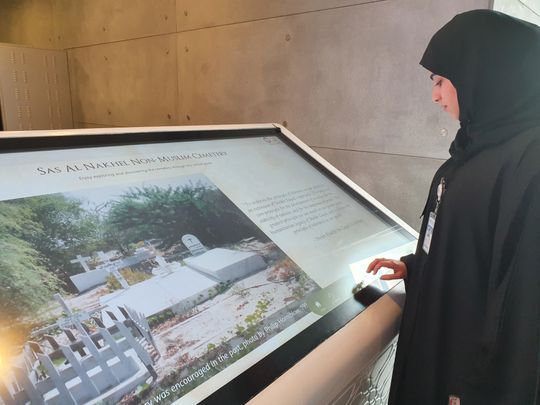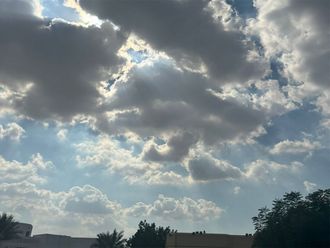
Abu Dhabi: An Abu Dhabi-based university has digitally document details of expatriates buried at the capital’s first cemetery for non-Muslim residents.
The documentation project by Khalifa University of Science and Technology recorded a total of about 500 people buried in the Sas Al Nakhel Cemetery between 1963 and 2012, after which the cemetery was permanently closed.
The information is now available through a touchscreen display that has details of the graveyard’s inhabitants.
Abu Dhabi history
“This project uncovers a part of Abu Dhabi’s history that the broader community has not been aware of,” said Dr Athol Yates, assistant professor at the University’s Institute of International and Civil Security.

“Traditionally, the remains of most expatriates who die here have been repatriated, but a number of people chose to be buried here, or bury their loved ones here. This project aimed to gather information about these people during the UAE’s Year of Tolerance, and create a digital record,” he told Gulf News.
The project on Monday was displayed to a number of Abu Dhabi-based religious leaders and officials from the Department of Community Development.
Important stories told
“The project tells the story of the UAE as a country that welcomed people from across the world to build a nation of tolerance. It will also hold a lot of value as families will welcome having their stories told,” said Anglican clergyman Canon Reverend Andrew Thomson.
The cemetery, which is located 500 metres from Al Maqtaa Bridge, is walled off. To access it, one must approach the St Andrew’s Anglican Church and ask for a key. Church staff said this happens at least three to four times a month, including family members who come by when visiting from outside the UAE.
Touchscreen repository
The touchscreen created as part of the project offers details of the deceased individuals, such as name, religious affiliation and other information as catalogued from the death certificates. Users of the touchscreen will be able to view an aerial photograph of the cemetery showing the location of graves, as well as background information about the cemetery, statistical details and relevant information.
To start off the project, the research team first took an aerial picture of the site, then proceeded to identify separate graves before sourcing information about the people buried. As expected, a number of bodies unmarked by tombstones have remained unidentified, while personal details about some of them remain missing at this stage.
Dr Yates said that the hope is to make the information available in Arabic this year.
What is known about the buried
“We have collected as much information as we could from the churches, the hospitals and the families about those who are buried at the cemetery. But as more people access the repository, we hope they will volunteer even more about these people who were once part of the Abu Dhabi community,” Dr Yates said.
While the majority of people buried at the cemetery are commoners, some of the more notable ones include British parliamentarian Margaret McKay, who passed away in 1996, and Brigadier Robert Pope, head of the Abu Dhabi Defence Force, who died in 1976.
There is also a disproportionately large number of dead children below the age of five years, including stillborn children. Of the 391 age-identified bodies, 140 are of children below five years, and Dr Yates said this may indicate the poor level of prenatal and neonatal care available at the time.
In terms of nationality, Indians make up the biggest group, followed by Filipinos, Lebanese and Brits, whereas the majority of people buried were from families that identified as Roman Catholic.
Dr Yates said the project contributes to demographic information about Abu Dhabi’s past inhabitants, and that he hopes to eventually share it with relevant government authorities.












